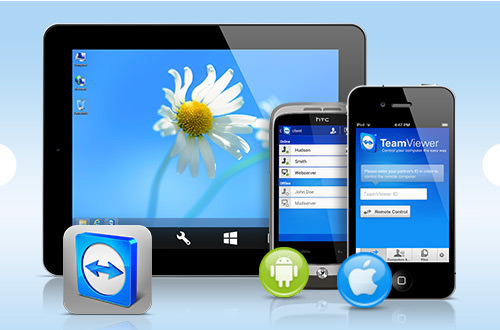Download
TeamViewer for your desktop PC from www.teamviewer.com.
We recommend the portable version
which
can be run from a USB drive or a CD. The app for the smartphone and tablets can
be downloaded from their respective
online app stores. Once downloaded, you'll have to configure it at both ends
once, but before
you
do this, you might need to register with TeamViewer for a free user account. You
can do so by signing up at https:// login.teamviewer.com/ and creating a free
account.
The
Desktop PC Configuration
Start
TeamViewer, agree with terms and conditions and proceed with the installation
as you would usually do with any other software. Once the installation is done,
start TeamViewer and it will sync with its online servers and allocate a unique
ID and password for your computer. Note down these details and keep them safe.
Every time
you
restart the application, you will receive a new password, while the ID will
remain static for your PC. This ID
and
password is a one-time security pass to give the invitation for a remote login
to your PC. You can use this ID and password to connect to your desktop PC from
a remote location. But if you restart your PC very often, it will be difficult
to keep track of the changing passwords.
For
this reason, you need to setup an unattended access to TeamViewer. Click on
‘Connection’ and then on ‘Setup
unattended
access’. This will bring up a wizard wherein details such as the PC name and
password needs to be
specified.
Give the desktop PC a name and password of your choice. The next screen will
then ask you to enter the
details
that you registered online. If you did not do it earlier, you can create one now
too. After entering the details, your system will now be available to you online
with the same password every time. Your desktop PC is now available for remote
access. You can now choose to lock the desktop or turn off the monitor.
The
Client Side
After
installing TeamViewer on your handheld, start the app. You will be welcomed by
an initial introduction screen, which can be skipped by pressing the back
button. The next screen will be ready on the ‘Connection’ tab, where you can
type in the details of the ID and the password of the computer you would like to
connect to. Simply skip this and click on the ‘Partner list’ tab. Here you can
log in using your username and password you created on the TeamViewer website.
Once
you do this, you will see a button called ‘My Partners’. Click on this button and
you will now see the desktop PC available online. Click on the PC name and you
can gain access to your desktop PC. And you’re done! Simple, isn’t it? Once in
it, you can investigate the number of features TeamViewer has to offer. You can
change resolutions, switch monitors, tweak
the performance by optimizing for quality or speed, remove wallpapers for
better
speeds, disable remote cursor, use the keyboard, use the mouse right-clicks, enable
function buttons, and the list goes on. Wel l, enjoy your remote access.
















